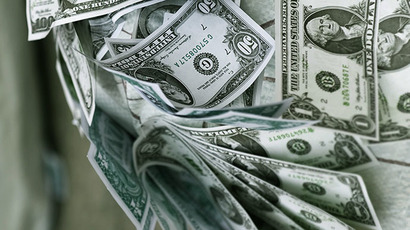New rule could deny up to 7.5m US students access to college education

Up to 7.5 million students could be denied access to for-profit colleges over the next decade if a new rule is passed forcing the disclosure of performance and earnings. Critics argue the measure will have a disproportionate effect on poorer students.
A new proposal entitled the gainful-employment rule would force
for-profit colleges in the US to disclose data on student default
rates, attendance and completion. The regulation would slash
federal student aid to courses where too many students defaulted
on their loans or were in debt.
This, in turn, would deprive 7.5 million students access to
higher education over the next ten years, says a report by the Association of Private Sector
Colleges and Universities (APSCU).
The legislation would put the onus on for-profit higher education
institutions to prove the estimated annual loan payment of an
average graduate does not surpass 20 percent of their
discretionary income. It would also ask for-profit schools to
make sure the default rate for graduates doesn’t exceed 30
percent.
APSCU’s report describes the gainful employment proposal as
“flawed, arbitrary and biased” and argues it would have
a disproportionate effect on poorer students in the US. According
to the report, the proposal does not take into account the fact
that lower income students more often than not have to borrow
more money to pay for their education.
APSCU predicts that 21.8 percent of the courses offered in these
institutions would not be able to comply with the new rule and as
a consequence it would deprive 44.2 percent of students of their
places in for-profit schools.
The Obama Administration originally aimed the rule at slicing
federal aid to under-performing vocational programs at for-profit
institutions. The government has criticized for-profit schools
for charging extortionate amounts and leaving students with high
debts and difficulties finding a good job.
The US Department of Education estimates that for-profit schools
make up around 13 percent of the American higher educational
population. The institutions also tend to attract larger amounts
of minorities such as mature students, single parents and
veterans.
Student debts in the US now amount to over 1 trillion, catering for more than 37 million
college students and graduates. According to statistics from The
College Board’s Trends in Higher Education, the average cost of a
Bachelor’s degree in a private college or university is $45,000.
“This exploding debt is also dragging down our economy. With
monthly loan bills that can easily exceed a mortgage payment,
it’s no surprise that homeownership among thirty-year olds has
declined steeply,” Sen. Elizabeth Warren told the Huffington
Post last September.
The Congressional Budget Office has estimated the US government
will earn $184 billion from student loans over the next ten
years.














